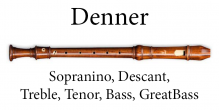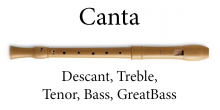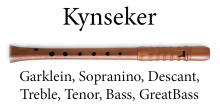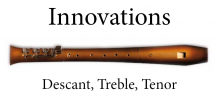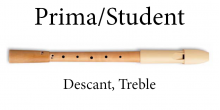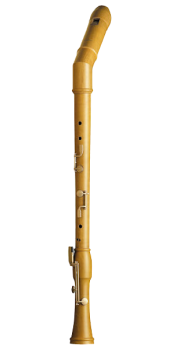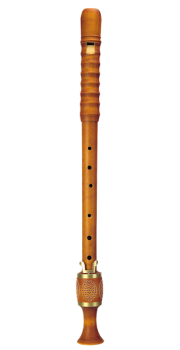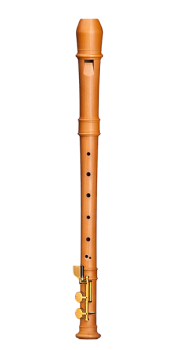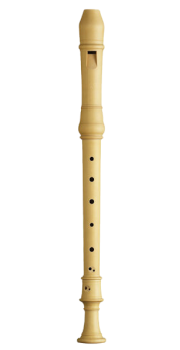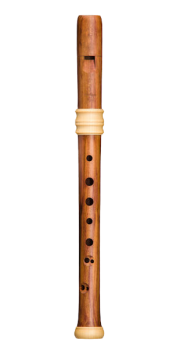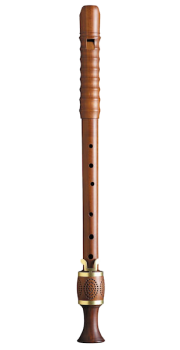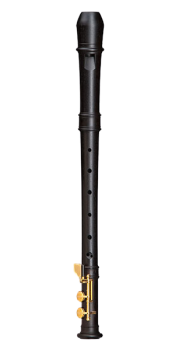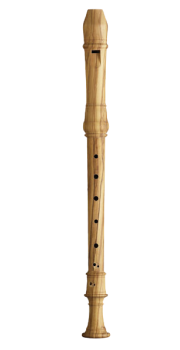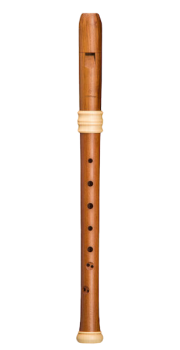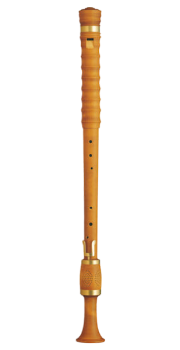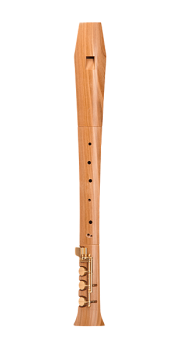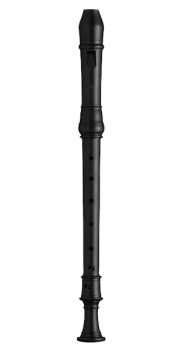No products
Prices are tax included
Filters
Mollenhauer has a history of recorder craftsmanship for almost 200 years. This innovative company has released several recorder series to cater for all the needs of recorder players, students and ensembles. Ideal series for recorder ensembles and soloistic needs are their Denner, Canta, Adrian's Dream, Dream and Kynseker series. Student centre...
Mollenhauer has a history of recorder craftsmanship for almost 200 years. This innovative company has released several recorder series to cater for all the needs of recorder players, students and ensembles. Ideal series for recorder ensembles and soloistic needs are their Denner, Canta, Adrian's Dream, Dream and Kynseker series. Student centred recorder series include Prima, Swing, Waldorf-edition. Their most recent series an electronic recorder series 'Elody' which can be hooked up to an amp. Mollenhauer pride themselves in using the best quality woods and materials to provide great recorders at a reasonable cost.
Subcategories
MOLLENHAUER DENNER: A sophisticated ensemble based on original instruments by Jacob Denner (1681–1735) in the important musical instrument collections in Nuremberg and Copenhagen.
Brilliant, expressive sound with a convincing charm.
Agile, quick response in all octaves: ideal for virtuosic music of any era.
Undercut finger holes: discover the particularly stable sounds of these instruments.
Visually impressive: finely crafted ornamental rings and a surface pleasingly finished with oil.
Several changes in the construction of recorders took place in the 17th century, resulting in the type of instrument generally referred to as Baroque recorders of which the Denner recorder is one model, as opposed to the earlier Renaissance recorders. These innovations allowed baroque recorders to possess a tone regarded as "sweeter" than that of the earlier instruments, at the expense of a reduction in volume, particularly in the lowest notes.
During the baroque period, the recorder was traditionally associated with pastoral scenes, miraculous events, funerals, marriages, and amorous scenes. Images of recorders can be found in literature and artwork associated with all of these. Purcell, J. S. Bach, Telemann, and Vivaldi used the recorder to suggest shepherds and imitate birds in their music.
Johann Christoph Denner (August 13, 1655 – April 26, 1707),[1] was a famous woodwind instrument maker of the Baroque era, to whom the invention of the clarinet is attributed.
Denner was born in Leipzig to a family of horn-tuners. With his father, Heinrich Denner, a maker of game whistles and hunting horns, he moved to Nuremberg in 1666.J. C. Denner went into business as an instrument maker in 1678 and was granted rights for the 'manufacture of French musical instruments consisting chiefly of oboes and recorders [flandadois]' in 1697. Two of his sons, Jacob and Johann David, also became instrument builders. At least sixty-eight instruments attributed to J. C. Denner have survived to the present day, although the surviving instruments with his name are believed to have come from his sons' workshops.
MOLLENHAUER DREAM: Wide bore – full sound for ensemble playing: the Dream-ensemble from soprano to knick bass
Renaissance – The heyday of consort playing
Renaissance recorders were constructed in such a way that their sound within the ensemble blended to create an especially homogenous texture.
The construction of Adri’s Dream Recorder is based on these very same characteristics. The wide bore creates a strong yet soft tone – the ideal oncept for recorders meant to be played in large groups: ensembles, group lesson or music class.MOLLENHAUER CANTA:
Canta – the joy of ensemble playing
Versatile, reliable recorder ensemble with an homogenous sound, made of pearwoodPleasantly clear sound – speaks easily: for use in ensembles or as a solo instrument, Canta is the model that offers versatility.
Especially resilient and reliable due to the choice of wood and robust, practical design.
Relaxed holding position due to the well-balanced weight distribution, light construction and slender, economical design.
MOLLENHAUER KYNSEKER:
Renaissance-/Early Baroque Ensemble from Garklein to Great bass
Versatile instruments after Hieronymus F. Kynseker (Nuremberg, 1636–1686) based on the original instruments kept at the Germanic National Museum in Nuremberg. Our Kynseker ensemble instruments remain faithful to the most important characteristics of the originals: its outer form and its strong sound, so full of personality.
In the 16th century, the structure, repertoire, and performing practice of the recorder is better documented than in prior epochs. The recorder was one of the most important wind instruments of the Renaissance, and many instruments dating to the 16th century survive, including some matched consorts. This period also produced the first extant books describing the recorder, including the treatises of Virdung (1511), Agricola (1529), Ganassi (1535), Cardano (c1546), Jambe de Fer (1556), and Praetorius (1619). Nonetheless, understanding of the instrument and its practice in this period is still developing.
A superb consort instrument:
tuning and sound have been carefully matched. The fingerings are similar to those of the familiar Baroque fingering patterns.
HARMONIC RECORDERS
The collaboration between recorder player Nik Tarasov and maker Joachim Paetzold resulted in 1996 in the development of the Modern Alto. It is the first modern recorder that follows the principle of Harmonic recorders with pure harmonics and a long bore: overblowing the first octave will produce clear in-tune harmonics whereas in traditional recorders the resulting sounds are not in tune and can at best be used as trill or alternative fingerings. Unimportant as it may at first seem, the ability to produce in-tune harmonics has far reaching consequences for the entire instrument – an incredibly strong and powerful low register and a range extending well into the third octave!ELODY
'Premiere’ of a new type of recorder: An instrument based on the Modern Harmonic Alto with innovative cool design, powerful tone and provision for connection for use as an electric recorder.
Function: The Elody can be played in two ways: its purely acoustic sound is impressive and allows the instrument to be used as a Modern Harmonic Alto that is suitable for any musical style and context; every Elody has been fitted with a hidden pickup. The combination package includes a special cable for easy connection to any common effects unit or amplifier.
MAARTEN HELDER
Lavishly equipped instruments developed in cooperation with the Dutch recorder maker Maarten Helder. Detailed technical extras place these recorders in the “de luxe” class of Harmonic recorders, the new type of recorder with in-tune harmonics.
Expressive, elegant and dynamic sound: the right instrument for those who are looking for new recorder sounds. Assertive and strong so as to be audible in combination with modern orchestral instruments: in modern music, jazz, folk or indeed traditional recorder repertoire.
Extended range into the third octave: this enables access to new repertoire in areas so far unavailable to recorder players, eg. flute repertoire.
The fingering for the two lower octaves follows traditional “Baroque” patterns; special fingerings are only required for the third octave.
MOLLENHAUER PRIMA
In 1995 Mollenhauer introduced a form of recorder employing an unusual combination of materials. The International Design Forum awarded the modern look and outstanding sound quality of the “Prima” model, made from a combination of plastic and wood, designed by Topel and Pauser Industrial Design.MOLLENHAUER STUDENT RECORDERS
These instruments build on nearly 200 years of instrument making experience within the Mollenhauer family. They display the characteristic attention to detail in all aspects of manufacture at a price most students can afford.
Reference: MOL-2546K
Brand: Mollenhauer
Canta Knick Bass Recorder in Pearwood
- baroque double hole, with double key
- Strong, stable sound: the foundation of the ensemble!
- Natural holding position: the knick (bent head) brings the instrument closer to your body; you have a significantly smaller distance to get to the lower notes.
$2,584.00 In StockReference: MOL-4417
Brand: Mollenhauer
Kynseker Tenor Recorder (with key) in Maple
- Maple Tenor dark stained with key.
- Versatile instruments after Hieronymus F. Kynseker, based on the original instruments kept at the Germanic National Museum in Nuremberg.
- Our Kynseker ensemble instruments remain faithful to the most important characteristics of the originals: its outer form and its strong sound, so full of personality.
$2,105.00 Out of stockReference: MOL-5936
Brand: Mollenhauer
Modern Treble in G Pearwood
A special development for playing music that is either intended for a G instrument or can be performed better on an instrument of this size.
Out of stock
The Harmonic Modern Treble in G is distinctive due to its extremely stable and assertive sound, and impresses with its precise brilliance, even in large ensembles with modern instruments.$1,558.00 Out of stockReference: MOL-5222
Brand: Mollenhauer
Denner Treble Recorder in Castello boxwood
- Castello Boxwood Treble, baroque double holes.
- The re-designed Denner Alto. Elegant full sound, usually only heard in low pitched recorders. The re-designed traditional bore creates a well-balanced baroque timbre of distinctive beauty and stability. It offers players new musical expressiveness with perfect intonation.
- Flexible sound, balanced in all registers, stable intonation.
$875.00 In StockReference: MOL-TE-4118
Brand: Mollenhauer
Dream-Edition Descant Recorder in Plumwood
Dream Recorders for the demands of a soloist
Due to their characteristic wide bore and full round sound Dream-Edition recorders are also suitable for demanding solo recorder repertoire. These hand-finished instruments in European plumwood with maple decorative rings combine a colourful rich sound with a stable tone. Baroque fingering and double holes provide surprising agility.
In Stock$597.00 In StockReference: MOL-4418
Brand: Mollenhauer
Kynseker Tenor Recorder (with key) in Plumwood
- Plumwood Tenor with key.
- Versatile instruments after Hieronymus F. Kynseker, based on the original instruments kept at the Germanic National Museum in Nuremberg.
- Our Kynseker ensemble instruments remain faithful to the most important characteristics of the originals: its outer form and its strong sound, so full of personality.
$2,315.00 In StockReference: MOL-5934
Brand: Mollenhauer
Modern Treble in G Grenadilla
A special development for playing music that is either intended for a G instrument or can be performed better on an instrument of this size.
Out of stock
The Harmonic Modern Treble in G is distinctive due to its extremely stable and assertive sound, and impresses with its precise brilliance, even in large ensembles with modern instruments.$2,900.00 Out of stockReference: MOL-5223
Brand: Mollenhauer
Denner Treble Recorder in Olive
- Olive, with Baroque double holes.
- The re-designed Denner Alto - Elegant full sound, usually only heard in low pitched recorders. The re-designed traditional bore creates a well-balanced baroque timbre of distinctive beauty and stability.
$1,344.00 In StockReference: MOL-TE-4318
Brand: Mollenhauer
Dream-Edition Treble Recorder in Plumwood
- Treble, Plumwood with maple decorative rings.
- New Model. Dream Recorders for the demands of a soloist. Due to their characteristic wide bore and full round sound Dream-Edition recorders are also suitable for demanding solo recorder repertoire.
$1,016.00 In Stock- Reduced price!
Reference: MOL-4507
Brand: Mollenhauer
Kynseker Bass Recorder in Maple
- Maple dark stained Bass with key.
- Versatile instruments after Hieronymus F. Kynseker, based on the original instruments kept at the Germanic National Museum in Nuremberg.
- Our Kynseker ensemble instruments remain faithful to the most important characteristics of the originals: its outer form and its strong sound, so full of personality.
$3,295.80 $3,662.00 -10% Out of stock Reference: MOL-5959-13
Brand: Mollenhauer
Elody Cherrywood Treble Recorder
Premiere of a new type of recorder: An instrument based on the Modern Harmonic Alto with innovative cool design, powerful tone and provision for connection for use as an electric recorder.
Cherrywood, clearly varnished, footjoint with E extension and triple key for E/ F/ F-sharpCherrywood, clearly varnished, footjoint with E extension and triple key for E/ F/ F-sharpOut of stock$4,376.00 Out of stockReference: MOL-5224
Brand: Mollenhauer
Denner Treble Recorder in Grenadilla
- Grenadilla Treble, baroque double holes.
- The re-designed Denner Alto. Elegant full sound, usually only heard in low pitched recorders. The re-designed traditional bore creates a well-balanced baroque timbre of distinctive beauty and stability. It offers players new musical expressiveness with perfect intonation.
- Flexible sound, balanced in all registers, stable intonation.
$1,379.00 In Stock

